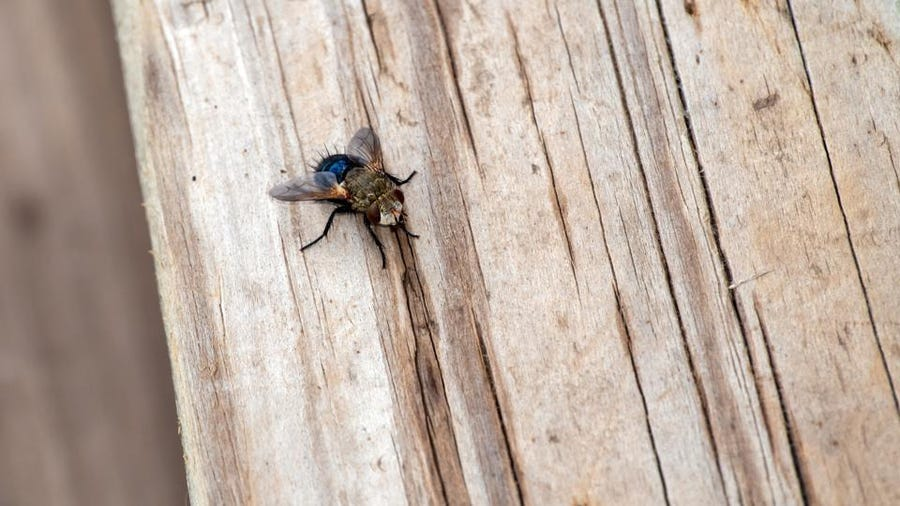Trivia About Flies

Did you know that flies are actually capable of flying backwards? This is made possible by their unique wing structure, which allows them to change the direction of their flight mid-air.
Flies are also able to walk on walls and ceilings thanks to their sticky feet. Their feet are covered in tiny hairs that secrete a sticky substance that helps them grip surfaces. Flies are attracted to rotting food and excrement because they contain the nutrients that flies need to survive. This is why you’ll often find flies in dirty places like garbage cans or animal pens.
Why are flies so bad this year
There are a few reasons why flies might be more prevalent in certain years. One possibility is that there has been an increase in the amount of food waste and garbage available for them to feed on. Flies can also reproduce very quickly, so if conditions are favourable (plenty of food and warm weather), their population can skyrocket in a short period of time. Sometimes, weather patterns can also cause an influx of flies from other areas. For example, if there’s a drought in one area, flies might migrate to another area where there’s more food and water available.
Flies are attracted to rotting food because of their sense of smell
They can smell food from up to six miles away! When they find food, they lay their eggs on it. The eggs hatch into maggots, which are fly larva. Maggots feed on the rotting food until they turn into adult flies. This entire process can happen in as little as seven days.
Flies are more than just nuisances. They can spread diseases like salmonella and E. coli, and they’ve been known to transmit viruses like the flu. So it’s important to keep them away from your food and clean up any areas where they might be breeding.
A fly can travel up to 12 miles per hour
The maximum recorded flight speed of a housefly is 12 miles per hour. Compare that to the average walking speed of a human, which is about 3 miles per hour, and it’s easy to see how flies can be so difficult to swat!
Flies have compound eyes
A fly’s compound eye is made up of thousands of tiny lenses, which give the fly a wide field of view. This is why it’s so hard to swat a fly – they can see you coming from a mile away!
Flies have a short life span
The average lifespan of a housefly is about 30 days. In that time, a female fly can lay up to 500 eggs! Flies are one of the most common pests in the world. They’re attracted to garbage, excrement, and other dirty places. They can also transmit diseases like salmonella and E. coli. Flies have a short life span but reproduce very quickly, so their populations can explode in a short period of time if conditions are favourable. To keep flies away from your home, keep your garbage cans clean and sealed, and don’t leave food out in the open.

 How to Plan and Budget for Major Home Renovation
How to Plan and Budget for Major Home Renovation  Repairs to Make Before Selling Your Home
Repairs to Make Before Selling Your Home  5 Reasons to Upgrade Your HVAC System Before Winter
5 Reasons to Upgrade Your HVAC System Before Winter